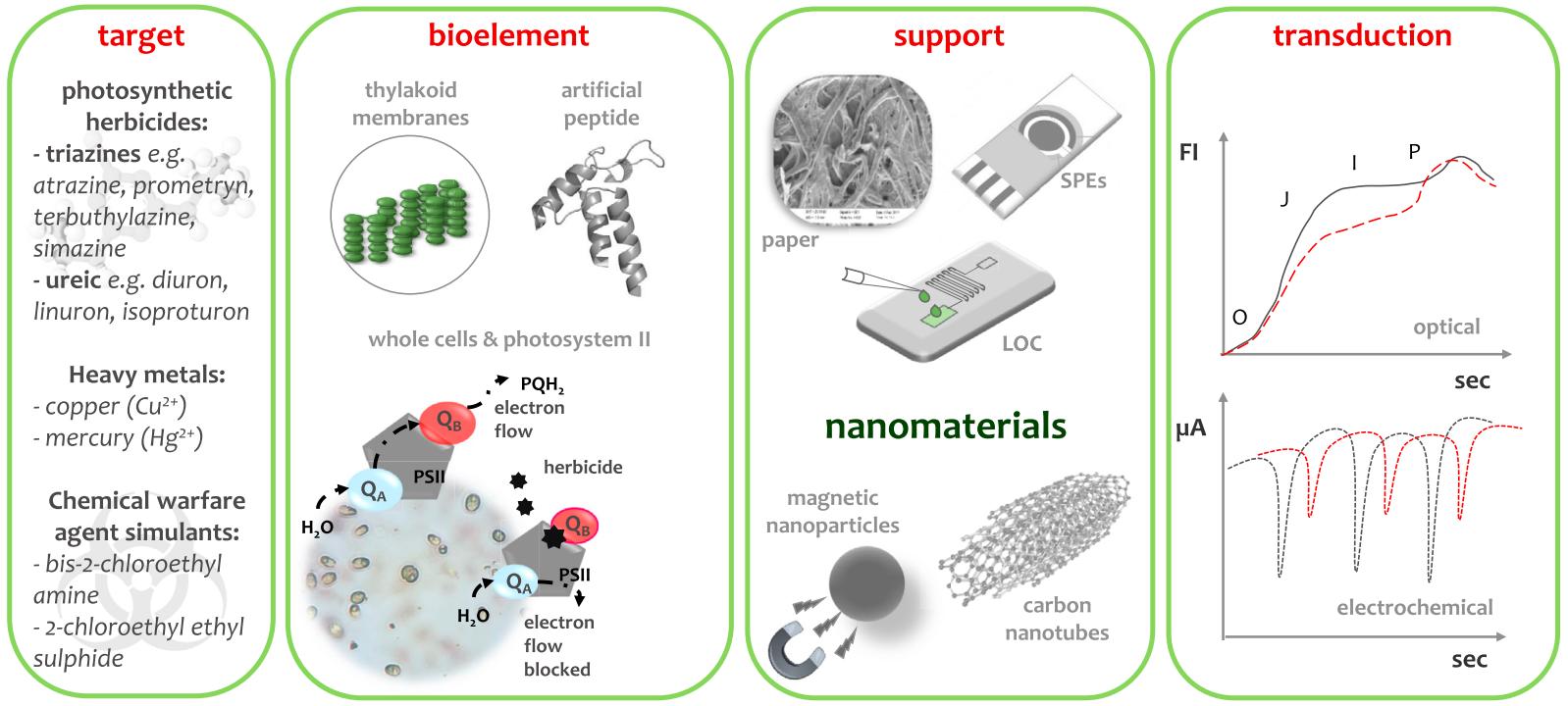Algae-Based Biosensor for Environmental Monitoring
In addition to applications in bioremediation and biomass production, algae have been extensively utilized in biosensing. Algae-based biosensors have demonstrated potential for sensitive, sustainable, and multiplex detection of analytes in environmental and safety-related analytes. Algal biosensors offer high sensitivity, the cost-effectiveness of algal culture, ease of genetic manipulation, sustainability, and versatility for integration into microfluidic and multiplexed devices.
Principles of Algae Biosensing
Eukaryotic algae capable of photosynthesis show versatile adaptations to continuous environmental changes in growth conditions and produce oxygen, fossil fuels, and biomass through photosynthesis.
- Photosynthesis in Algae
The process of photosynthesis takes place in the chloroplast, the organelle responsible for the conversion of light energy into chemical energy. Chlorophyll is the key element in this complex process and its function is to absorb light and transfer the energy of photons to the photosystems PSII and PSI, thus allowing for charge separation, a special redox reaction. - How Algae-Based Biosensors Detect Photosynthetic Herbicides
Many studies have shown that photosynthetic herbicides of the triazine, diazine, and ureic classes interact with the reaction center complexes to alter the balance of environmental chemistry. In other words, they can completely or partially inhibit the transfer of electrons from the primary acceptor QA to the secondary quinone QB in PSII. This inhibition alters the fluorescence emission of chlorophyll a, which can be monitored by chlorophyll fluorescence induction curves in an herbicide concentration-dependent manner.
Algae-Based Biosensor System
Algal biosensors offer the possibility of simultaneous multiplex analysis of a wide range of contaminants including herbicides, heavy metals, and chemical weapons.
 Fig.1 Schematic representation of an algae-based biosensor. (Antonacci, A., & Scognamiglio, V., 2020, Trends in biotechnology)
Fig.1 Schematic representation of an algae-based biosensor. (Antonacci, A., & Scognamiglio, V., 2020, Trends in biotechnology)
- Optical/Electrochemical Transduction
The algal sensor has a dual transduction system, optical and electrochemical, allowing the analysis of different matrices with different physicochemical characteristics, such as turbidity and interferents, without sample pretreatment.
Optical transduction provides very high sensitivity at picomolar concentration levels and is a suitable tool for the analysis of herbicides in drinking water.
Electrochemical transduction allows the measurement of more turbid and complex matrices, such as surface water.
- Customized Supports
A number of attractive algal biosensors designed for flexible, modular, and small miniaturized integration have been reported. These devices are equipped with optical/electrochemical measurement units and flow control systems, all embedded in compact miniaturized biosensors for multifunctional and multiplexed environmental monitoring. Recent advances in microelectronics, nanotechnology, microfluidics, rational design, and research into alternative support materials have paved the way for the design of more competitive biosensors.
Advantages of Algae-Based Biosensor

Less Susceptible
The main advantage of using algae is their adaptability to different environments, as they are less susceptible to physicochemical changes than other biosensors.

Dual Transduction
Dual optical and electrochemical signal transduction can be used for biosensor construction, allowing analysis in complex matrices with different turbidity and analyte concentrations.

Without Pretreatment
The third advantage is the ease of operation. Extensive sample pretreatment is not required, unless filtration or concentration is needed to improve sensitivity.
Our Services
Lifeasible has the professional equipment and experienced teams to provide high-quality algae isolation and culture services, algae engineering services, algae analysis services, algae genetic screening services, algae-based production services, algae monitoring services, algae treatment services, and algae-based biosensor services for environmental monitoring. We are honored to share our experience and knowledge with you. Please contact us for more information.
Reference
- Antonacci, A., & Scognamiglio, V. (2020). Biotechnological advances in the design of algae-based biosensors. Trends in biotechnology, 38(3), 334-347.
Our services are for research use only and not for any clinical use.